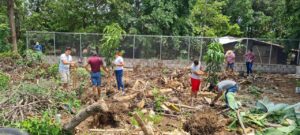What are some things that make a tree impressive to you?
Here are some of my criteria:
1) One that makes my eyeballs jump out of their sockets and gives me goosebumps;
2) One that I cannot get the entire tree into the frame of a photograph;
3) When stretching arms around the base of its trunk, I cannot begin to capture its girth;
4) One that is so tall, I cannot see its top;
5) One they name a park after.
Scientists have far more demanding criteria than mine. Biologists are constantly studying and searching for the oldest specimens of life on the planet. Among their questions is the longevity of trees. A specific Japanese cedar is rumored to be 7,000 years old.
A species of Antarctic beech in Queensland, Australia, was found and is estimated to have been living for 12,000 years.
I don’t pretend to know anything about trees but can be easily impressed by the enormity of the giant redwoods and sequoias in the Sierra Nevada range in western California. At one time tunnels were cut through them for people to drive cars through just for photo opportunities. Fortunately ecologists now recognize their fragility and protect them. Hawaii’s banyan trees have parks built around their enormous aerial prop root systems.

The climate in Central and South America is conducive to the growth of exotic trees including some unusual hardwoods. Prior to environmental activism tropical rain forests were stripped during harvesting nearly decimating their future existence.
Seeing some of these formidable living trees that still have that “wow” factor can bring a sense of awe and wonder. We stumbled upon two such enormous trees that fit my criteria on a recent trip to El Salvador. As one might expect, these mighty trees were far off the beaten path. The locals who pass by them on a daily basis probably don’t even stop and pause to ooh and aah at them. But I stopped dead in my tracks. The first was a Ceiba located in a streambed at the bottom of a hill. It stood majestic, dwarfing all the other trees in the area. This specific tree’s age is unknown, but Ceibas can live up to 100 years and can grow up to 230 feet tall. Its massive canopy, perfectly symmetrical, shaded the entire valley. It is the national tree of Guatemala, and yes, there is a national park by its name in Puerto Rico.
The other tree, the Guanacaste, is also spectacular, but its structure is not quite as impressive in its presentation. It is an evergreen which can adapt itself to become deciduous for one to two months during the dry season. The national tree of Costa Rica, the Guanacaste bark felt like steel to the touch. I wonder how many chainsaw teeth this tree would ruin trying to cut it down. However, we were told that this tree is of more value than the Ceiba. Its wood is highly prized sought after for its use for high-end furniture. In other words, this sentinel tree won’t be standing here much longer. I consider it a blessing to have seen it in its natural state, towering into the blue sky.
We saw some lovely artistic pieces of furniture, including massive chunky, outdoor benches and tables as well as refined indoor desks and end tables, made from various native exotic woods. The swirling, colorful grains in the woods were absolutely enchanting requiring nothing more than a clear varnish finish to bring out each one’s unique character.
Whether viewing them growing naturally outside in the tropical jungle or viewing their interior grains turned into treasured pieces of furniture, the Central American hardwood trees are sources of stop in your tracks, eye popping oohs and aahs.
For the musicians in our readership, here’s an aside for you. Recently I heard a story that interested me on tropical rosewood used to make marimbas. I researched it to verify it and discovered that the best sounding marimbas (“voice of wood”), a bar percussion instrument played with mallets, are made using primarily Honduran rosewood. (It also grows in Belize and other Central American countries). That specific hardwood, a species belonging to the genus Dalbergia, has numerous advantages for the marimba. It resists shrinking, is a close/dense grain that offers excellent resonance to not only marimbas but also the guitar and piano. Its dark brown, reddish hue is attractive, strong, and durable. Its mellow tones make it highly sought by skilled musicians.
Now comes the clinker. Because it is a hardwood growing in a very specific areas of Central America, it is in high demand. Therefore a spike in illegal logging exists in some places resulting in countries such as Belize’s government imposing moratoriums on all logging of the wood. In other places it is simply considered endangered. In addition a type of caterpillar threatens to devastate it.
The hope is for this prized rosewood timber to be harvested sustainably before it disappears totally. The musicians who insist on playing instruments using Central American rosewood are hoping for a good outcome to the issue. Marimba makers are experimenting with synthetics and other woods realizing the rosewood will not be around forever. Unfortunately, they are not pleased with the results. Marimba players agree. It may be akin to a professional concert pianist playing on anything other than a Steinway piano.



